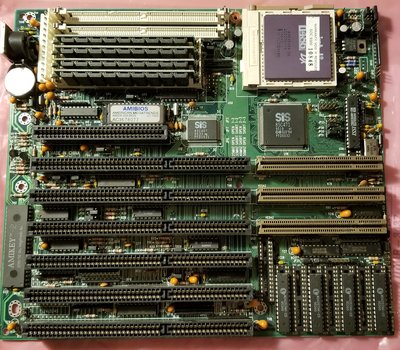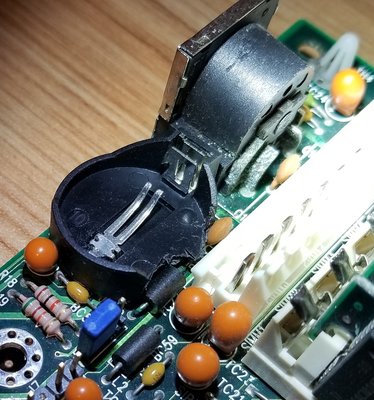First post, by twilliamc
- Rank
- Newbie
So I chose this motherboard for a variety of reasons. VLB slots, CMOS replaced, WINbios, etc.
However, since booting up an using the thing, it appears to have a serious flaw. It kills any CMOS battery I have in it. After a day or so, the CMOS will drain well below 1.5v and the motherboard will lose all its settings. Any help would be greatly appreciated. I have already checked the CMOS discharge pin, JP39 and it is set to pins 1 and 2 as normal. The motherboard in question is a V4S471/G Ver 9.0 or so I was told by the ebay seller. Online manuals seem to concur. Any tips for diagnosing this poor guy? I have included a close up of what appears to be corrosion on a diode and the AT keyboard port. Any help would be greatly appreciated. I have a soldering station and decent skills. If I need to desolder the battery terminal and clean it up, I am more than willing to do it in order to keep the board in the land of the living.
Unnamed: 486DX4 @ 120MHz, 16MB, 2GB, 2MB VGA, SBPro 2.0, DOS/W3.11, W95
PC-65:P3 @ 800MHz x2, 512MB, 128GB SSD, Voodoo3, SB Live!, Win98SE

